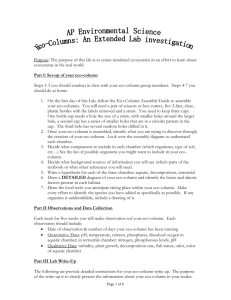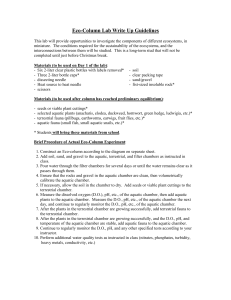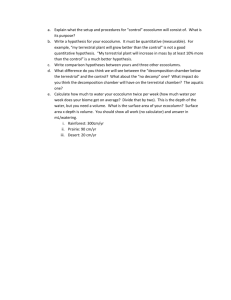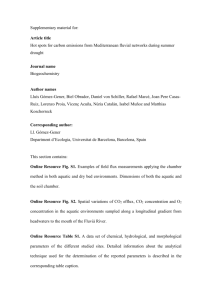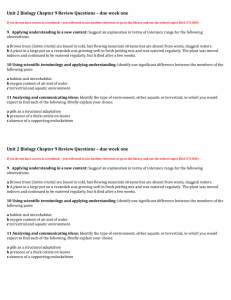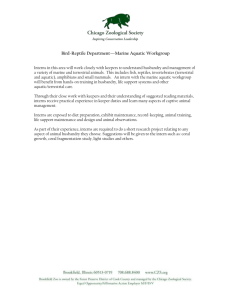Ecocolumn Lab
advertisement
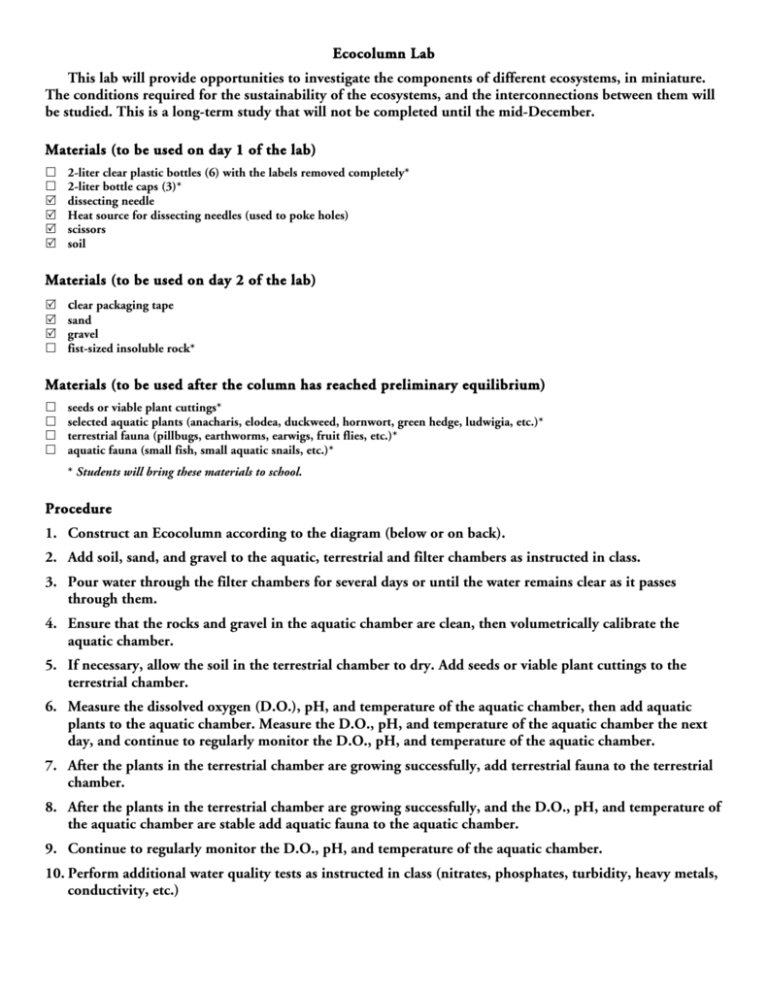
Ecocolumn Lab This lab will provide opportunities to investigate the components of different ecosystems, in miniature. The conditions required for the sustainability of the ecosystems, and the interconnections between them will be studied. This is a long-term study that will not be completed until the mid-December. Materials (to be used on day 1 of the lab) 2-liter clear plastic bottles (6) with the labels removed completely* 2-liter bottle caps (3)* dissecting needle Heat source for dissecting needles (used to poke holes) scissors soil Materials (to be used on day 2 of the lab) clear packaging tape sand gravel fist-sized insoluble rock* Materials (to be used after the column has reached preliminary equilibrium) seeds or viable plant cuttings* selected aquatic plants (anacharis, elodea, duckweed, hornwort, green hedge, ludwigia, etc.)* terrestrial fauna (pillbugs, earthworms, earwigs, fruit flies, etc.)* aquatic fauna (small fish, small aquatic snails, etc.)* * Students will bring these materials to school. Procedure 1. Construct an Ecocolumn according to the diagram (below or on back). 2. Add soil, sand, and gravel to the aquatic, terrestrial and filter chambers as instructed in class. 3. Pour water through the filter chambers for several days or until the water remains clear as it passes through them. 4. Ensure that the rocks and gravel in the aquatic chamber are clean, then volumetrically calibrate the aquatic chamber. 5. If necessary, allow the soil in the terrestrial chamber to dry. Add seeds or viable plant cuttings to the terrestrial chamber. 6. Measure the dissolved oxygen (D.O.), pH, and temperature of the aquatic chamber, then add aquatic plants to the aquatic chamber. Measure the D.O., pH, and temperature of the aquatic chamber the next day, and continue to regularly monitor the D.O., pH, and temperature of the aquatic chamber. 7. After the plants in the terrestrial chamber are growing successfully, add terrestrial fauna to the terrestrial chamber. 8. After the plants in the terrestrial chamber are growing successfully, and the D.O., pH, and temperature of the aquatic chamber are stable add aquatic fauna to the aquatic chamber. 9. Continue to regularly monitor the D.O., pH, and temperature of the aquatic chamber. 10. Perform additional water quality tests as instructed in class (nitrates, phosphates, turbidity, heavy metals, conductivity, etc.) Data Analysis 1. In the lab notebook, keep comprehensive records of all work on the ecocolumn. 2. Observe and collect data from your ecocolumn until the mid-December. 3. Do some background research on EcoColums, by finding three websites that have information related to an EcoColum like experiment. List the three website URL’s, and provide a brief summary of the information from each website and how it helped your experiments progress. 4. The lab notebook will include the following: • Some general hypothesis related to the stability or resiliance of the EcoColumn • procedure & materials • all observations (both qualitative and quantitative) • data (tabulated), charts and graphs (pH, temperature, Dissolved oxygen, etc.) 5. At the conclusion of the lab, a thoughtful, scientifically valid, and collaborative discussion will be completed. 6. Any error analysis or potential improvements to the lab. 7. List at least three different ecological problems (local, regional, national, or global) that your research would be applicable to in terms of providing basic research or useful scientific information. 8. List two potential business or industrial applications you can think of where your research from the EcoColum experiment could be applied. Diagram of the Ecocolumn Base of bottle w/very small holes to allow slow drainage Terrestrial Chamber Filter Chamber Aquatic Chamber Caps (enlarged view) w/small holes that allow water to pass through slowly Window-for removing water samples Permanent marks indicate volume every 100 milliliters
